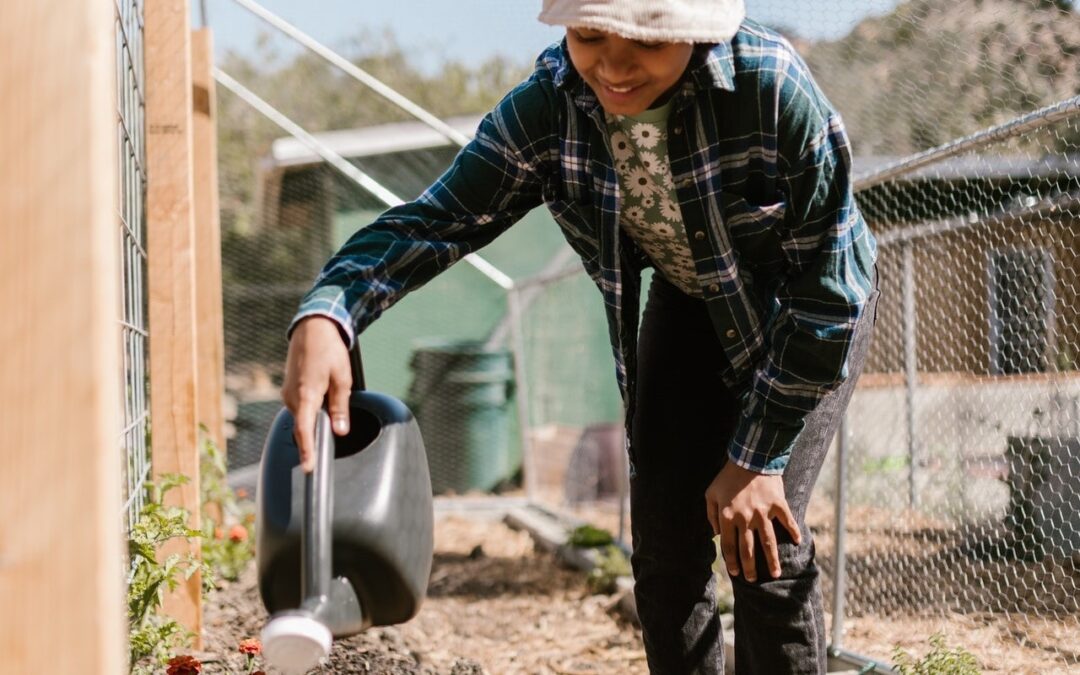One of the biggest worries for parents, while their children are out of school, is that they won’t do anything productive with their time. They fear that their kids will waste time on video games and social media, or getting into trouble. Perhaps what they really need is a project. That said, in this post, we’ll explore why you should try gardening with your kids this summer.
According to Rasmussen University, gardening with children has several perks. First, “it encourages them to eat healthier.” It also “provides engaging, moderate exercise.” Our favorite benefits are that it can build confidence while developing STEM and analytical abilities as well as relieving stress.
When you get your children involved in gardening, they get to plant seeds and literally watch them grow into something. It shows them that when they put in the work, it can yield some really tasty results.
Michigan State University found that gardening can also improve literacy skills and cognitive development. As children learn the different names of plants, and analyze information, they can develop and master critical thinking skills and enjoy visual stimuli in the process.
Potato Gardening – A Great First Start
A simple choice for first-time gardeners, potatoes have the advantage of a “kid-approved” vegetable in terms of flavor. Requiring little garden maintenance during the growing period, kids can create a small-space garden that still yields plenty of potatoes at harvest time.
Using a variation on the popular layering method for cultivating potatoes, kids are given a glimpse of the scientific aspect of the plant’s growing process as they help build the “ground” that supports the growing spuds. They can also excavate part of the patch early to study developing potatoes and learn more about their growth.
Planting Potatoes
The potato “seeds” are actually sections of a whole potato whose “eyes” have sprouted, meaning new plants are springing from the old fruit. The potatoes are cut into seeds or pieces featuring intact eyes. These seed potatoes are planted eyes-up in shallow trenches, then covered with a layer of dirt.
Older kids can choose and cut apart potatoes themselves for the “seeds.” They can also use a shovel and hoe to break apart a garden section or squared-off portion of the backyard to form the potato bed. The garden space required doesn’t have to be large or deep since the potatoes will be covered with additional layers of mulch to replace the traditional soil layers.
Layering the Mulch
Once the potato plants sprout, kids can begin layering the potato bed to increase growth and protect the developing spuds. Hay, straw, extra soil, and leaf compost will work on layering the plants, especially with a simple box frame to surround the potato bed. The extra layer is piled over the growing plant until only the topmost green leaves are exposed. As the plant grows taller again, more layers are added, each time covering the plants until only each top is exposed.
Additional frames can be stacked box-like around the bed to hold the layers of soil; many potato growers use a potato barrel instead of stackable frames when gardening, but the frames have the advantage of making harvest easier for young gardeners once the potatoes are ready.
As each layer of mulch or soil is added, the potato plants will take root and create new young potatoes below the surface. The more layers of coverage, the more vertical layers of potatoes produced by the original plants are trenched in the ground.
Harvesting Spuds
Once the harvest season arrives (and the potato vines have withered), the potatoes are ready for removal. This is a big opportunity for young gardeners eager to get their hands in the dirt. Unstack the boxes layer by layer and shovel the soil or mulch into a wheelbarrow for recycling in the spring or disposal.
Pull the potatoes free and drop them in buckets and bags. Once all the layers have been harvested, the potatoes are ready to be brushed clean and laid out on racks to air-dry. After a few days, the potatoes can be stored in an open container like wire or plastic baskets.
Let kids enjoy the fruits of their labor with a variety of classic potato recipes. From stuffed potato skins and French fries to potato pancakes and hash browns, the taste of homegrown potatoes may encourage kids to experiment with other vegetables during the next garden season.
Hammond Psychology and Associates is the go-to resource for residents seeking psychological evaluations from a licensed psychologist in the Tampa Bay area. Click here to learn more about our Psychological Testing services in our Brandon location.

